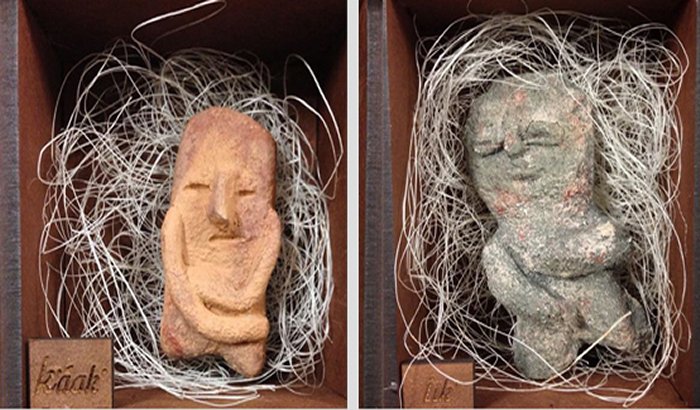Tricksters: Mischievous Troublemakers Making Attempts To Help And Hinder In Mythologies Of Ancient Cultures
A.Sutherland - AncientPages.com - In mythologies of many ancient cultures, there is a male figure known as a trickster. Occasionally, this figure has also a nickname 'rogue', 'prankster, or 'cheater'.
His ambiguous character combined both godlike and demonic qualities, which expressed themselves in good and evil deeds.
The trickster could create a good, honest impression on people or gods. He acts as a creator, destroyer, sage, or simply prankster. His actions were often proof of his cunning and cleverness.
Ancient people also talked of trickster's wisdom, his braveness, or how he acted in a cowardly manner. The trickster could be also incredibly selfish, stubborn, and often demonstrated disrespectful behavior.
"There is a character called the Trickster who plays a crucial role in much of the world's mythology and folklore. The Trickster has many incarnations, he is, in the words of Lewis Hyde, "the adept who can move between heaven and earth, and between the living and the dead... he is sometimes the messenger of the gods and sometimes the guide of the souls, carrying the dead into the underworld or opening the tomb..." (Joseph Maurone, 'The Trickster Icon and Objectivism').
Cruelty, a weakness for women, and greed were also familiar to him. If necessary, however, he was able to save the world from monsters and evil rulers, bring gifts to people, and at the same time, provoke quarrels between them.
Sometimes he also brought quarrels between gods and people. A good example is a mischievous god Loki who is involved in many of the Norse myths. The trickster Loki often deceives the gods and creates dangerous situations and causes quarrels, then comes to the rescue of the gods, or is ready to solve troublesome situations.
As we said, trickster that could easily change his personality was a popular figure in mythologies around the world.
See also:
Nurikabe: Trickster That Manifests Itself As Invisible, Impassable Wall In Japanese Old Beliefs
Hermes – Messenger Of The Gods, Divine Trickster, Patron Of Merchants And Thieves In Greek Mythology
Pukwudgie The Trickster: Grey-Faced Humanoid Creature In Native American Beliefs
Askeladden – Little Trickster That Succeeds Where All Others Fail
Kokopelli – Popular Trickster God Of The American Southwest Brought Happiness To People
In African mythology, there are many tricksters; one is Eshu in beliefs of the Yoruba people of present-day Nigeria. He is the magician and troublemaker known for his various disguises and unpleasant mischief; another is Anansi widely known in West Africa. In Polynesian traditions, Maui is a culture hero, famous for his exploits and cleverness.
Aboriginal tricksters, on the other hand, are believed to be humorous mischief-makers and pranksters who really enjoy damaging things. These mythical individuals are known as Wurulu-Wurulu in parts of Australia.
We also must not forget Lord Krishna (one of the most important of the avatars of the god Vishnu) who has several characteristics of a trickster; however, Krishna’s trickery has an essential moral purpose that defeats wickedness.
In Greek mythology, Prometheus is a Titan, culture hero, and trickster figure who is credited with the creation of humanity from clay, and who defies the gods by stealing fire and giving it to humanity as civilization. There is also Hermes, who except for many divine characteristics, is also a trickster god who outsmarts other gods for his own satisfaction.
Trickster Was Important In African And Native American Culture
In African and Native Americans traditions, tricksters played a key role. In myths and legends, they could take the shape of an animal and be capable of using magic.
Iktomi, in Native American beliefs, was a creator figure, a shapeshifter, and a very destructive trickster, mostly to himself.
Depending on the culture and the region, he could appear as a spider, rabbit, fox, crow, raven, frog, and a coyote, which is considered a hero, immortal and trickster.
Alux is a little mythical troublemaker and guardian of corn fields in Mayan folklore. Image credit: Xenotes Oasis Maya
The coyote is the most common trickster figure in myths of the Kalapuya tribe of Native Americans, with their traditional homeland in the Willamette Valley, in Oregon. In tales of the Southwest Native Americans, the Coyote trickster is described as having human form and, occasionally, animal form.
Sometimes he helps people, but most often, his impulsive and foolish behavior causes nothing but trouble for everyone around him. Frequently killed through his recklessness, the coyote miraculously comes back to life afterward. The Coyote is credited with bringing humanity the gift of fire.
Written by – A. Sutherland - AncientPages.com Senior Staff Writer
Copyright © AncientPages.com All rights reserved. This material may not be published, broadcast, rewritten or redistributed in whole or part without the express written permission of AncientPages.com
Expand for referencesReferences:
Maurone, Joseph. "The Trickster Icon and Objectivism." The Journal of Ayn Rand Studies 3, no. 2 (2002): 229-58.
Sherman J. Storytelling: An Encyclopedia of Mythology and Folklore
Clute J. Grant J. The Encyclopedia of Fantasy
More From Ancient Pages
-
 3,800-Year-Old Cuneiform Clay Tablet With Agreement To Purchase A City Discovered In An Ancient Tumulus In Turkey
Archaeology | Aug 11, 2023
3,800-Year-Old Cuneiform Clay Tablet With Agreement To Purchase A City Discovered In An Ancient Tumulus In Turkey
Archaeology | Aug 11, 2023 -
 Excavations In Keezhadi, Tamil Nadu, India Shed Light On Life During Sangam Age
Artifacts | Aug 24, 2015
Excavations In Keezhadi, Tamil Nadu, India Shed Light On Life During Sangam Age
Artifacts | Aug 24, 2015 -
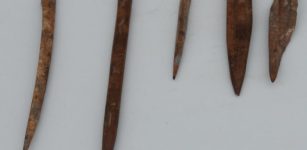 8,200-Year-Old Needles Unearthed In Turkey’s Izmir
Archaeology | Jul 13, 2022
8,200-Year-Old Needles Unearthed In Turkey’s Izmir
Archaeology | Jul 13, 2022 -
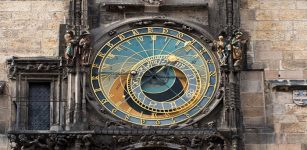 On This Day In History: Fascinating Prague Astronomical Clock Mentioned For The First Time – On Oct 9, 1410
News | Oct 9, 2016
On This Day In History: Fascinating Prague Astronomical Clock Mentioned For The First Time – On Oct 9, 1410
News | Oct 9, 2016 -
 Oldest-Known Grinding Tool Used 350,000 Years Ago Was Found In Tabun Cave, Israel
Archaeology | Jan 4, 2021
Oldest-Known Grinding Tool Used 350,000 Years Ago Was Found In Tabun Cave, Israel
Archaeology | Jan 4, 2021 -
 Ancient Egyptian Tombs With Stunning Trove Of Artifacts And Human Remains Unearthed In Saqqara
Archaeology | Jan 17, 2024
Ancient Egyptian Tombs With Stunning Trove Of Artifacts And Human Remains Unearthed In Saqqara
Archaeology | Jan 17, 2024 -
 Has An Unknown Ancient ‘Israel Silk Road’ Been Discovered?
Archaeology | Jan 20, 2023
Has An Unknown Ancient ‘Israel Silk Road’ Been Discovered?
Archaeology | Jan 20, 2023 -
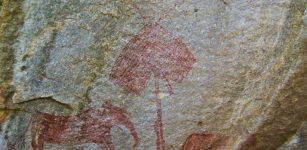 Hundreds Of Rock Paintings Found In Tanzania By Polish Archaeologist
Archaeology | Jul 11, 2018
Hundreds Of Rock Paintings Found In Tanzania By Polish Archaeologist
Archaeology | Jul 11, 2018 -
 Discovery Of Chromosomes Offers Evidence Of Ancient Humans Living In South America Over 18,000 Years Ago
Archaeology | Aug 21, 2022
Discovery Of Chromosomes Offers Evidence Of Ancient Humans Living In South America Over 18,000 Years Ago
Archaeology | Aug 21, 2022 -
 Surprising And Fascinating Finds On The Wreck Of The Lootsi Cog
Archaeology | Nov 27, 2023
Surprising And Fascinating Finds On The Wreck Of The Lootsi Cog
Archaeology | Nov 27, 2023 -
 Why Human Languages Can Be Likened To Branches On A Tree And Help Finding A Single Common Ancestor
Linguistic Discoveries | Sep 11, 2021
Why Human Languages Can Be Likened To Branches On A Tree And Help Finding A Single Common Ancestor
Linguistic Discoveries | Sep 11, 2021 -
 Wreckage From Famous Warships Explored In 3D On Anniversary Of Sinking
Archaeology | Nov 22, 2022
Wreckage From Famous Warships Explored In 3D On Anniversary Of Sinking
Archaeology | Nov 22, 2022 -
 Three 17th Century Shipwrecks Discovered In Central Gothenburg, Sweden
Archaeology | Oct 8, 2019
Three 17th Century Shipwrecks Discovered In Central Gothenburg, Sweden
Archaeology | Oct 8, 2019 -
 Manco Capac: Legendary Founder Of The Inca Dynasty Of Peru
Featured Stories | Jun 19, 2016
Manco Capac: Legendary Founder Of The Inca Dynasty Of Peru
Featured Stories | Jun 19, 2016 -
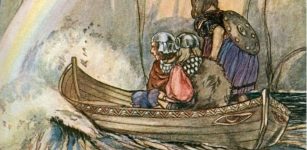 Manannán Mac Lir – Irish God Of Sea, Healing, Weather And Master Of Shapeshifting
Celtic Mythology | Mar 2, 2023
Manannán Mac Lir – Irish God Of Sea, Healing, Weather And Master Of Shapeshifting
Celtic Mythology | Mar 2, 2023 -
 Hiding Tunnel Complex Dated To The Bar Kokhba Revolt Revealed Near The Sea of Galilee
Archaeology | Apr 23, 2024
Hiding Tunnel Complex Dated To The Bar Kokhba Revolt Revealed Near The Sea of Galilee
Archaeology | Apr 23, 2024 -
 Yakhchals: Ingenious Ancient ‘Refrigerators’ Could Store Ice In The Hot Desert
Ancient Technology | Sep 15, 2018
Yakhchals: Ingenious Ancient ‘Refrigerators’ Could Store Ice In The Hot Desert
Ancient Technology | Sep 15, 2018 -
 Pre-Clovis, Paisley Caves: Archaeologists Identified The Earliest Population Of North America
Archaeology | Jul 16, 2020
Pre-Clovis, Paisley Caves: Archaeologists Identified The Earliest Population Of North America
Archaeology | Jul 16, 2020 -
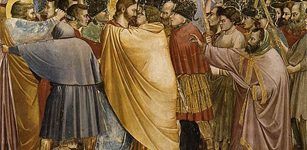 Judas: A Famous Traitor Or A Hero?
Biblical Mysteries | Oct 16, 2017
Judas: A Famous Traitor Or A Hero?
Biblical Mysteries | Oct 16, 2017 -
 Beautiful Zeugma-Like Mosaics Unearthed In Sinop Province, Northern Turkey
Archaeology | Oct 17, 2020
Beautiful Zeugma-Like Mosaics Unearthed In Sinop Province, Northern Turkey
Archaeology | Oct 17, 2020


